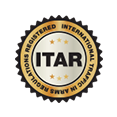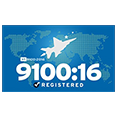FAQ
3D Scanning Services
3D SCANNING SERVICES
FAQ
Frequently Asked Metrology Questions
We’re building a better FAQ bank and value what you’d like to learn about our products and services. Please use the button below to let us know if you have any questions or suggestions for topics to cover in our FAQs.
Submit a FAQ
Please submit your FAQ using the form below and we will get back to you shortly.
What is a 3D colormap comparison?
3D color map comparison is the process of overlaying 2 or more 3D data sets and displaying the normal deviation between them. That distance is represented by a color scheme defined by the user. The overall look of a colormap is also described as similar to a color topographical map and uses the same principles to determine color variation.
What is 3D metrology?
3D metrology is the scientific study of physical measurement. However, in looser terms it’s often referred to as the general field of precision measurement within industry. In its basic form, applying 3D metrology is very accurately acquiring an object’s geometrical data in 3 axes (x, y, z). These measurements are often acquired through the use of a coordinate measuring machine (CMM); however any form of accurate 3D capture system can be utilized.
What is bluelight scanning?
Bluelight scanning is a term used to describe the use of 3D structured light-based scanners in metrology applications. In most cases, structured light-based scanners are the most accurate and highest resolution data output in the industry. The term “blue” refers to the color of the LED bulb in the projector of the system. Systems can be ordered in different colors, examples being blue, green, and white.
What is design intent?
Using dimensions and constraints, a designer can determine how CAD model features are related to one another. Design Intent refers to how a CAD model will behave when a change is made in the future.
What is DesignX?
Geomagic DesignX is an industry-leading 3D scan-to-CAD model program. By implementing 3D scan data, the user can reverse engineer an incredibly accurate, feature-based model that can then be imported into several existing CAD packages, including SolidWorks, Siemens NX, PTC Creo, and Autodesk Inventor.
What is hand held 3D scanning?
Hand held 3D scanning is a portable process of collecting accurate 3D geometry, and in some cases, color of a variety of objects both mechanical and organic in design nature. The process typically consists of using a structured light or laser scanner to collect surface data of an object without contact, very similar to taking a series of pictures of the object from all sides; only instead of just a 2D image, the 3D geometry of the object is captured. The collected data can then be used for a variety of applications such as inspection, re-engineering and 3D printing.
What is ITAR?
ITAR stands for International Traffic in Arms Regulations. It is a set of regulations that controls the import and export of defense-related articles and services on the United States Munitions List (USML). These regulations are controlled and administered by the Directorate of Defense Trade Controls (DDTC) and the State Department. The USML is a list of articles, services, and technology designated as defense and space related by the U.S. Government. Essentially, anything to do with military (guns & ammo, armor, tanks, naval vessels) or aerospace (fighter jets, attach helicopters, spacecraft) falls under the USML one way or another. Being ITAR compliant means the individual(s) have registered with the U.S.G. to let them know they are dealing with sensitive information and taking necessary precautions to keep said information confidential. ITAR is designed to help ensure defense-related technologies do not fall into the wrong hands.
What is industrial CT scanning?
CT, in this case, is defined as x-ray computed tomography. CT scanning uses x-rays to compute a large number of 2-D images of an object both externally and internally. By combining all of these 2-D images together a three-dimensional representation of an entire object is created. Once scanned, void analysis, fiber analysis and other structural analysis can be performed on the part in addition to normal metrology services (Inspection, Reverse Engineer…etc.). In most cases CT scanning is similar to getting an MRI at the hospital, however industrial CT scanning uses significantly higher powers and radiation levels.
What is laser scanning inspection?
The process of qualifying a part’s dimensional geometric features as well as its freeform surfaces. Laser scanning data gives the user the ability to do a point by point analysis of all areas of the part, irrelevant of basic dimensional requirements. An advantage of laser scanning inspection over traditional methods is its ability to reveal potential disparities in parts that would have otherwise been overlooked.
What is a laser tracker?
A laser tracker is a portable coordinate measuring machine (PCMM) that allows extreme accuracy over large distances. The base unit of a laser tracker uses a combination of lasers and encoders in conjunction with retroreflector targets to precisely measure points in a 3D (X, Y, Z) coordinate system.
What is long range scanning?
Long range scanning is loosely referred to as any form of scanning that ranges from about 10 meters to several square kilometers. This technology is generally used to scan and collect pictures and point cloud data of buildings and large spaces. Long range scanning is often used to provide as-is 3D CAD models of structures and BIM modeling. The most common form of scanner used in this realm is referred to as a terrestrial LIDAR scanner.
What is a NURBS model?
NURBS is an acronym that stands for “Non-uniform rational basis spline”. A NURBS model is made up of patches fitted to scan data that create an extremely accurate model of the part in the as-is condition.
What is a parametric model?
A parametric model is a CAD-based model that has a feature-based history tree. The history allows the end user to modify his or her part in their native CAD software, for example Solidworks, Creo, and Autodesk.
What is a polygonal model?
A polygonal model is the conversion of a 3D point cloud into representative polygons. By connecting three or more points, a triangle or quad face can be established. The combination of these adjacent faces represents the complete object. This polygonal model can be used for 3D printing or downstream analysis.
What is a portable CMM?
A portable CMM is a coordinate measurement machine that can be packed up and moved from station to station or site to site. It can include probing, scanning or a combination of the two. Different hardware configurations can include lasers, encoders and camera systems with or without LEDs. They usually can be configured with almost any third-party inspection software on the market. They are highly accurate and a versatile way to achieve quality inspection and/or reverse engineering tasks in multiple locations.
What is Revit or BIM modeling?
BIM [Building Information Modeling] refers to the digital integration of multiple infrastructures (water, power, electric, structural, architectural, etc.) into a single, easy to follow 3D model. The model(s) created in this manner are often referred to as “smart models”.
Revit is a popular 3D BIM modeling program that is often informally used interchangeably with the term BIM modeling.
What is Volume Graphics?
Volume Graphics is both the name of the company and the software that it produces to process industrial computed tomography (CT or X-ray) 3D scan data. It computes gathered 3D pixels (called voxels) into editable information. With these voxels Volume Graphics software allows users to visualize, reconstruct, analyze, create surfaces, and create polygonal models.
What is a voxel?
Just as pixels are assembled to make up a 2D picture, voxels are assembled in 3D grids to make a model.
Each cube shaped voxel is used to represent a small section of material in 3D space. This is especially useful for CT scanning because each voxel can indicate a material’s density in addition to its position for that small section.
The size of a voxel can be as small as several microns, so when all of a model’s voxels are assembled they can render an object made of multiple materials at a high resolution.
How to create digital 3D data from buildings?
In simple terms, all that is required to create 3D data from buildings is a 3D laser scanner and a building that is visible to the device up to 300 meters away. The scanner creates a point cloud image of the building which is an accurate digital geometrical representation consisting of millions of X,Y,Z points. Many commonly used computer-aided programs such as AutoCAD and Revit are equipped to accept these point clouds directly from the scanner. Once the point cloud is established in these programs, further dimensional analysis and surface generation can be performed.
How to 3D inspect tubes?
The process of 3D inspection of tubes uses 3d data to calculate centerlines of the cylindrical straight sections. Once the data is obtained, tangent points, intersection points (XYZ), and CNC bender data (LRA or YBC) can be extracted. The data can be used for programming corrections, reverse engineering, or inspection. Common forms of data collection include non-contact tube probes which use infrared beams to calculate centerlines, or laser scanners.
What is the size limit of 3D scanning?
There is virtually no size limits with 3D scanning. On the small end, CT scanners can scan objects only a few nanometers in size. On the large end, Airborne LIDAR scanners can scan hundreds of square miles. Typically, the smaller the scan the higher the resolution and accuracy. Below is a list of some general equipment with range accuracy and resolution:
- CT Scanner
- Object range: ~1 um–1 meter
- Accuracy: ~0.003 mm
- Resolution: ~0.003 mm
- Structured Light Scanner
- Object range: ~1 mm–2 meters (more if combined with photogrammetry or other equipment)
- Accuracy: ~0.025 mm
- Resolution: ~0.03 mm
- Portable Arm with Scanner (PCMM)
- Object range: ~1 mm–5 meters (more if combined with laser tracker or other equipment)
- Accuracy: ~0.05 mm
- Resolution: ~0.05 mm
- Laser Tracker (PCMM)
- Object range: ~10 mm–320 meters (more with relocations)
- Accuracy: ~0.05 mm
- Resolution: ~0.05 mm
- Mid-Range Terrestrial LiDAR
- Object range: ~0.25 meters–20 meters (more with relocations)
- Accuracy: ~0.35 mm
- Resolution: ~0.35 mm
- Long Range Terrestrial LiDAR
- Object range: ~1 meter–300 meters (more with relocations)
- Accuracy: ~2 mm
- Resolution: ~2 mm
- Airborne Terrestrial LiDAR
- Object range: ~2 meters – ? (No real restrictions to upper size)
- Accuracy: ~50 mm
- Resolution: ~50 mm





